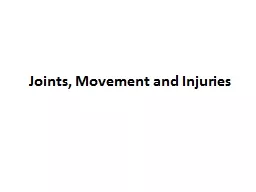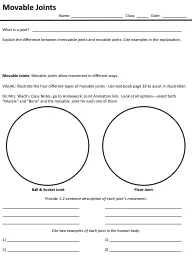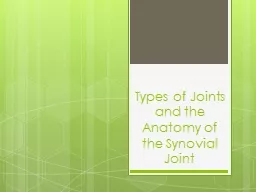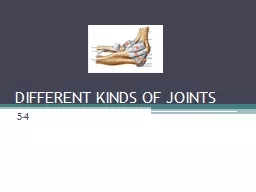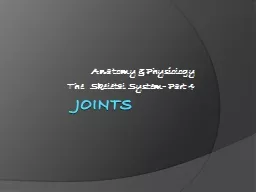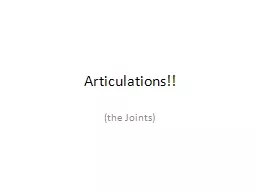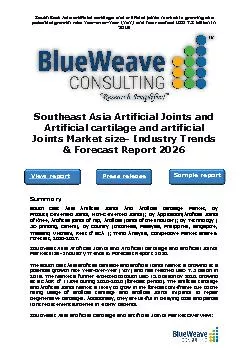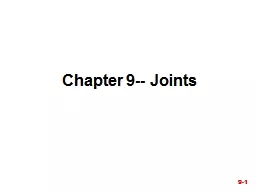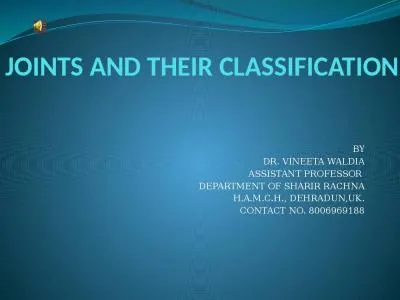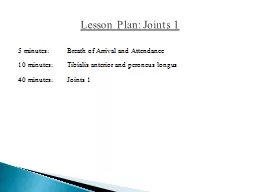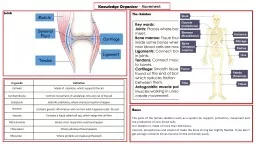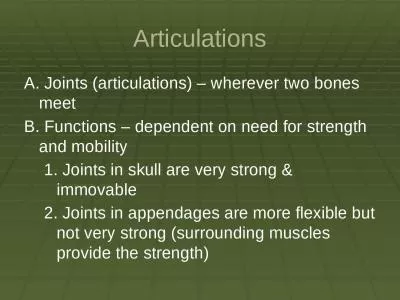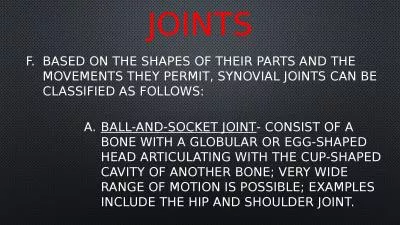PPT-Joints, Movement and Injuries
Author : tawny-fly | Published Date : 2020-04-03
What are joints Jointsplaces where two bones articulate or come together The human body contains three types of joints Fibrous Cartilaginous Synovial Fibrous Joints
Presentation Embed Code
Download Presentation
Download Presentation The PPT/PDF document " Joints, Movement and Injuries" is the property of its rightful owner. Permission is granted to download and print the materials on this website for personal, non-commercial use only, and to display it on your personal computer provided you do not modify the materials and that you retain all copyright notices contained in the materials. By downloading content from our website, you accept the terms of this agreement.
Joints, Movement and Injuries: Transcript
Download Rules Of Document
" Joints, Movement and Injuries"The content belongs to its owner. You may download and print it for personal use, without modification, and keep all copyright notices. By downloading, you agree to these terms.
Related Documents

